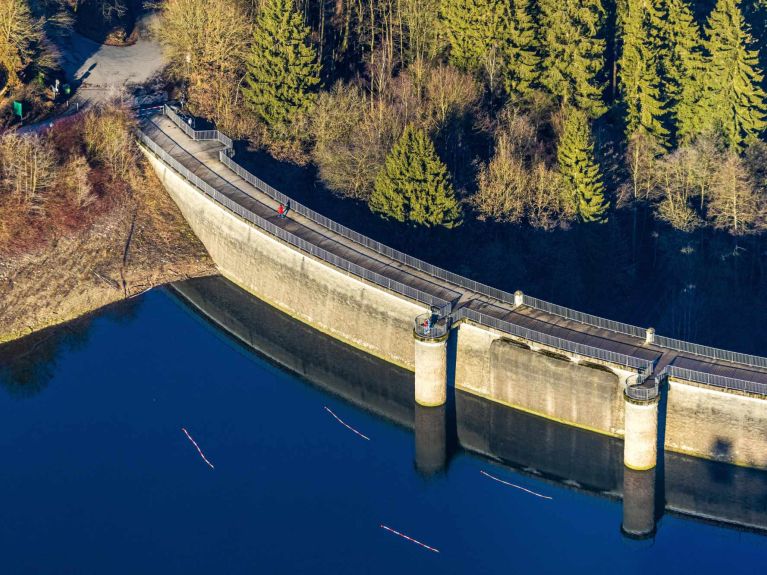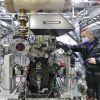Germany invests in hydrogen
An important energy source for Germany’s energy transition, plus nine facts you should know about it.

Nine fascinating facts about water and the energy source that is hydrogen:
- Groundwater is fed by rainfall. Despite considerable regional differences, precipitation in Germany totalled 805 l/m² in 2021 – corresponding roughly to the long-term average.
- The amount of theoretically useable groundwater and surface water in Germany, averaged over many years, is 188 billion cubic metres per year.
- Around 70 per cent of Germany’s drinking water comes from groundwater or spring water. Groundwater is generally of very good quality and sourced from wells up to 400 metres deep.
- Drinking water consumption per capita in Germany has remained relatively stable in recent years. On average, 128 litres are consumed per person and day.
- Only roughly 4 per cent of drinking water is used for eating and drinking. 36 per cent goes on personal hygiene, 27 per cent is used for flushing the toilet, 12 per cent for washing laundry, 9 per cent is used by small businesses, 6 per cent goes on washing up and 6 per cent on domestic cleaning.
- At least 9 kilograms of water are needed to produce 1 kilogram of green hydrogen by electrolysis of water.
- Hydrogen, which is actually colourless, is named after various colours depending on its origin. Green hydrogen is produced by electrolysis of water using electricity from renewable energy sources. Green hydrogen is therefore carbon-free.
- In the buildings sector, it is conceivable that natural gas could be replaced by hydrogen in the natural gas grid. In 2020, natural gas sales in Germany totalled 939 TWh (billion kWh), 31 per cent of which was attributable to buildings. To replace this amount of energy with green hydrogen, 214.6 million cubic metres of water would need to be split by electrolysis. Assuming continuous operation, that means 24,500 cubic metres per hour, which is equivalent to the hourly water consumption of households in greater Berlin – if the hydrogen is produced in Germany, that is. Completely replacing natural gas is not a viable alternative in the short term; experts believe that 10 per cent would be possible.
- A fuel cell in which hydrogen is converted to energy in the form of electricity and heat generates “emissions” of pure water vapour. The water consumed during the production process is returned to the environment, in other words.
You would like to receive regular information about Germany? Subscribe here:


